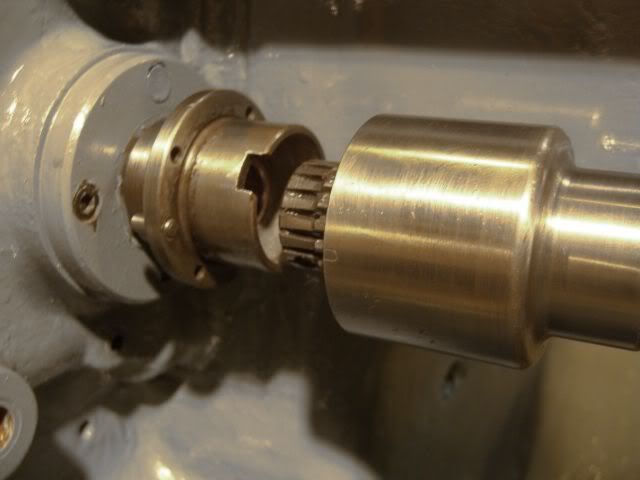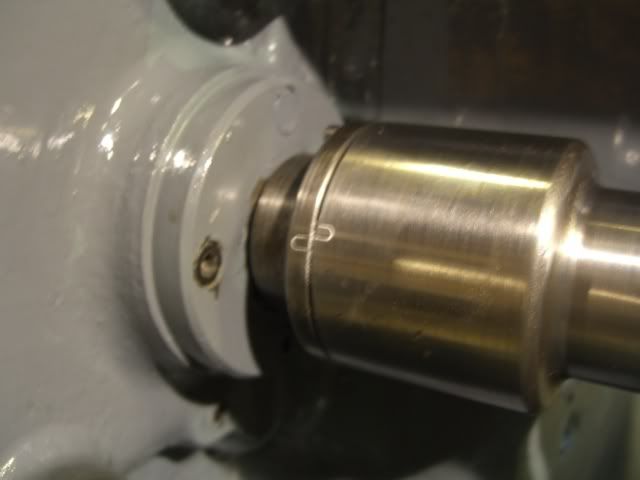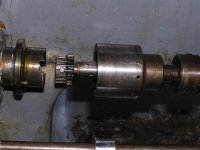jrlandau
Aluminum
- Joined
- Jan 28, 2003
- Location
- San Jose CA USA
I am restoring a 10EE (1956) that I have never used.
Reassembling the feed rod drive (after removing and cleaning up the apron and replacing it), I was surprised to find that the two parts that ought to match, don't. That is, when the two dogs engage their slots, the screw holes in the 2 parts of the cover are not aligned, nor are the pins with their holes. There is a witness mark that isn't lined up, either. And the RH half of the cover has 2 screw holes, the LH half four! Am I missing something? A brain? And if not, how to tackle it?
Here are the 2 parts of the drive (the spring is left out for the photo)

Here are the 2 parts with the dogs engaged--you can see the witness marks mismatched.

Any help would be appreciated.
Joe
Reassembling the feed rod drive (after removing and cleaning up the apron and replacing it), I was surprised to find that the two parts that ought to match, don't. That is, when the two dogs engage their slots, the screw holes in the 2 parts of the cover are not aligned, nor are the pins with their holes. There is a witness mark that isn't lined up, either. And the RH half of the cover has 2 screw holes, the LH half four! Am I missing something? A brain? And if not, how to tackle it?
Here are the 2 parts of the drive (the spring is left out for the photo)

Here are the 2 parts with the dogs engaged--you can see the witness marks mismatched.

Any help would be appreciated.
Joe





